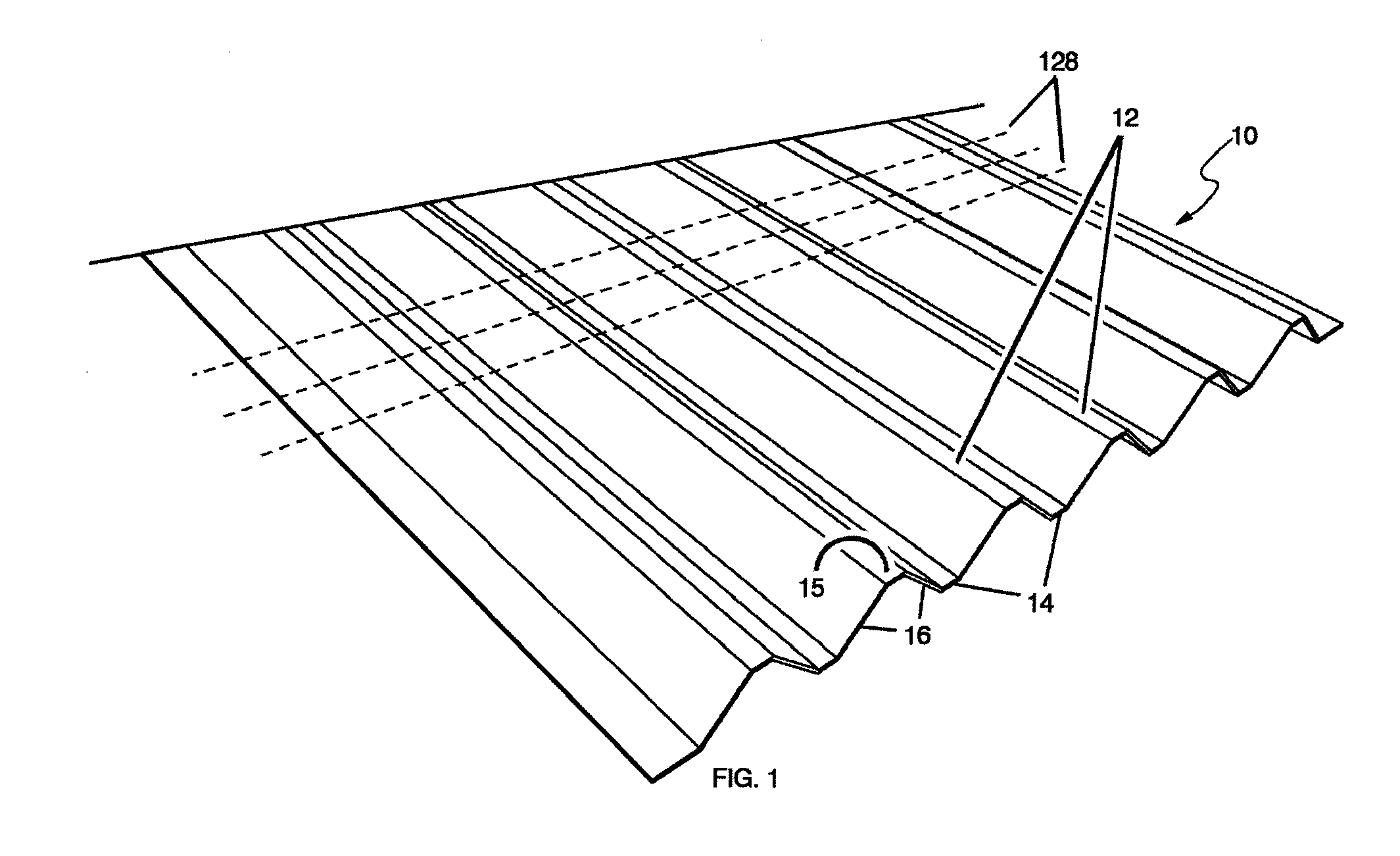Engineered Molded Fiberboard Panels. Methods of Making the Panels, and Products Fabricated From the Panels
a technology of pressure molding and fiberboard, which is applied in the direction of adjustable chairs, auditorium chairs, construction materials, etc., can solve the problems of toxic off-gasing, general relativity of panels, and not particularly flexible, and achieves favorable strength-to-weight and strength-to-flexibility ratios, overall eco-friendliness, and high density
- Summary
- Abstract
- Description
- Claims
- Application Information
AI Technical Summary
Benefits of technology
Problems solved by technology
Method used
Image
Examples
second embodiment
[0063]FIG. 5 illustrates a composite stressed-skin panel 40. Panel 40 comprises a pair of corrugated panels 10 which are stacked one on top of the other with the inner rib peaks 15 aligned and adhered together, and which are then sandwiched between two flat panels or skins 32. The outer flat panels 32 are suitably adhered to the outermost flat peaks 15 of the respective panels 10. This creates a very strong and rigid panel. Since the angled webs 16 of the two corrugated panels 10 are each at 45 degrees, this creates a 90 degree change in direction (see Angle “a” in FIG. 5, for example). It also creates channels 42, 44 of different sizes which can be used for air distribution and as a pathway for conduit, pipes, building wiring, or the like through the panel.
third embodiment
[0064]FIG. 6 illustrates a multi-layer, stressed-skin panel 45. This panel uses the three layer panel 40 of FIG. 5 as the core. A first outer corrugated sheet 10A is adhered to one of the outer panels 32 of core 40 with its ribs extending perpendicular to the ribs of the two central ribbed sheets 10 of the core. A second outer corrugated sheet 10B is adhered to the other outer panel 32 of core 40. Finally, two outer flat sheets or skins 47 are adhered to the outer faces of corrugated sheets 10A and 10B. The multi-layer panel thus has four core layers of corrugated sheet material, with the ribs of the two central layers extending in a first direction and the ribs of the two outer corrugated layers 10A and 10B extending transverse to the first direction. In one embodiment, the ribs of the central layers are arranged to be oriented horizontally if the panel 45 is used as a vertical construction or wall panel, with the ribs of the outer corrugated layers extending vertically.
[0065]The m...
PUM
| Property | Measurement | Unit |
|---|---|---|
| angle | aaaaa | aaaaa |
| 45 degree angle | aaaaa | aaaaa |
| 45 degree angle | aaaaa | aaaaa |
Abstract
Description
Claims
Application Information
 Login to View More
Login to View More - R&D
- Intellectual Property
- Life Sciences
- Materials
- Tech Scout
- Unparalleled Data Quality
- Higher Quality Content
- 60% Fewer Hallucinations
Browse by: Latest US Patents, China's latest patents, Technical Efficacy Thesaurus, Application Domain, Technology Topic, Popular Technical Reports.
© 2025 PatSnap. All rights reserved.Legal|Privacy policy|Modern Slavery Act Transparency Statement|Sitemap|About US| Contact US: help@patsnap.com



